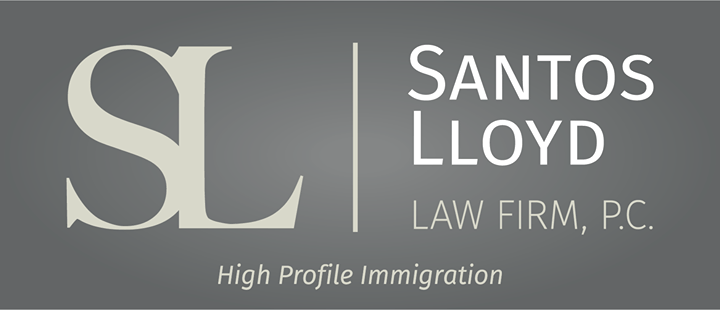Unlocking US Business Opportunities: A Guide to Non-Immigrant Visa Options for Entrepreneurs
Flavia Santos Lloyd • July 6, 2023
Entrepreneurs and investors are key drivers of economic growth and job creation, and the United States has long been a destination of choice for those seeking to start or grow their businesses. However, navigating the U.S. immigration system can be complex and time-consuming. In this article, we will discuss the various non-immigrant visa options available to entrepreneurs and investors looking to enter the United States.
L-1 Intracompany Transferee Visa
The L-1 Intracompany Transferee Visa is a visa category specifically designed for executives, managers, and employees possessing specialized knowledge who are relocating from a foreign corporation to a U.S. affiliate. The eligibility for an L-1 visa requires the foreign corporation and the U.S. affiliate to be connected through common ownership or control. Transferees must also demonstrate that they have been employed abroad for at least 12 months in an executive, managerial, and specialized knowledge capacity.
An employee being relocated might also be heading to the United States to set up an office if the company doesn't have an existing presence there. The L-1 visa isn't the best choice for someone in the early stages of launching a company, particularly if the business is being established in the United States. However, it could be a viable option for an entrepreneur who has, for instance, kick-started a business outside of the United States which will maintain its operations, or if the entrepreneur merges operations with a foreign company where they have previously been employed.
E-1 Treaty Trader Visa
E-1 Treaty Trader
Visa category is designated for nationals of countries with which the U.S. maintains treaties of commerce and navigation. An entrepreneur qualifying for an E-1 visa must be entering the U.S. to carry out substantial trade, including trade in services or technology, principally between the U.S. and the treaty country.
Trade, as defined, must involve an exchange of goods, money, or services. Virtually any goods or services can meet this requirement. The transaction flow between the two countries should be verifiable, typically done through documents such as purchase orders, wire transfers, or bills of lading.
To determine the substantiality of the trade, the Department of State (DOS) will assess the frequency and monetary value of the transactions. More regular, high-value transactions are given greater consideration. However, smaller businesses can also qualify if they can demonstrate that the transaction volume is sufficient to support the treaty trader(s) and their family.
The DOS applies a general rule stating that at least 50% of the trade must be between the United States and the treaty country. Thus, applicants should provide evidence of their total business transactions and proof that a minimum of 50% is between the two countries. The remaining trade can be domestic or international with other countries. Even if a US-based subsidiary meets the 50% requirement, the parent company abroad does not necessarily need to conduct 50% of its trade with the United States.
Due to the requirement of demonstrating substantial trade history, it may be challenging for early-stage startups to qualify for an E-1. This visa type is more frequently used by established entrepreneurs with a foreign business and a US customer base, who wish to continue their operations in the US. In some instances, foreign firms aiming to penetrate the US market may use an E-1 for a newly established US subsidiary and start moving inventory for sale in the US. In this case, all trade may be between the foreign parent and US subsidiary, thereby comfortably meeting the 50% threshold.
E-2 Treaty Investor Visa
E-2 Treaty Investor
Visa is for citizens of countries that have a treaty of commerce and navigation with the United States. To qualify for an E-2 visa, an entrepreneur must be coming to the United States to develop and direct the operations of a business in which they have invested, or are in the process of investing, a substantial amount of capital.
In the classic example of an E-2 investment, the E-2 investor transfers their personal wealth from a foreign bank account into the bank account of their new US enterprise, thereby establishing their investment. However, the Foreign Affairs Manual (FAM) provides some flexibility, enabling the officer to consider other "arrangements" as an "investment."
For those not intending to finance the E-2 enterprise entirely or partially with their personal funds, the nationality of other investors needs to be considered to ensure that at least 50% of the company shares remain in the hands of nationals from the E-2 treaty country. For instance, suppose one co-founder is American and the other is French, and they each own 50% of the company, contributing $40,000 from their personal wealth as initial capital for the company. To raise additional funds, they each decide to swap 7% of their equity (14% in total) with an angel investor for $150,000. If the angel investor is also French, then 57% of the company is now owned by French nationals; but if the angel is a U.S. citizen, then only 43% of the company is French, and it no longer qualifies as a French company for E-2 purposes. In this scenario, the founders will need to switch to another visa type before the equity exchange, as their E-2 will no longer be valid when the company loses its treaty nationality.
A central concern for every E-2 application is the "source of funds." The applicant must clearly demonstrate the lawful origin of their investment funds, along with evidence of ownership and control. Moreover, to be classified as an E-2 investment, the invested assets or funds must be "at risk." This means that if the business fails, the investment is proportionately lost. Though the investment capital may be loan-based, the loan cannot be secured against the assets of the E-2 enterprise. Personal loans, which may be secured by personal assets like a second mortgage or unsecured loans typically obtained from family, friends, or business partners, are permissible.
O-1 Visa
The O-1 visa category is a unique and advantageous option for startup entrepreneurs and business owners who have demonstrated exceptional prowess in their field. The O-1A visa variant specifically caters to individuals exhibiting extraordinary ability in the sciences, education, business, or athletics. This makes it a viable avenue for those looking to establish or expand their business ventures in the US without the necessity of maintaining an overseas office or providing evidence of trade and investment, as required by L-1 and E-1/E-2 visas.
Unlike the more traditional visa categories, the O-1A visa shifts the emphasis onto the beneficiary's individual achievements within their domain. It demands that the beneficiary meets at least three of the eight regulatory criteria set forth by the US Immigration Services. These criteria form a comprehensive measure of the individual's accomplishments, recognition, and overall standing in their respective field.
For instance, if the beneficiary has been the recipient of nationally or internationally recognized prizes or awards, it highlights their excellence and industry-leading competence. Alternatively, membership in prestigious associations which require commendable achievements as judged by recognized experts can also serve as evidence of their extraordinary ability.
The O-1 visa offers an alternate route that places an emphasis on individual expertise and recognition in the applicant's field, rather than specific trade or investment quotas. This visa is especially beneficial for those who have demonstrated exceptional capability and achieved a high degree of success in their respective business domain.
Overall, the O-1A visa offers an effective immigration route for extraordinarily talented entrepreneurs and business owners. By meeting and surpassing the eligibility criteria, they can gain access to the vast opportunities in the US market, thereby furthering their business ventures and contributing to the economic growth and diversification of the US.
Conclusion
For foreign entrepreneurs and investors, several U.S. immigration options are available: the E-1 treaty trader visa, the E-2 treaty investor visa, the L-1 intra-company transferee visa, and the O-1 visa for individuals with extraordinary ability. While E-1 and E-2 visas center on trade and investment respectively, the L-1 is for managers or executives transferring to a U.S. branch of their company, and the O-1 visa acknowledges individual expertise and accomplishments. Each visa has unique prerequisites, necessitating the guidance of an immigration attorney for optimal strategy selection. Correct navigation of these options opens vast U.S. entrepreneurial opportunities and resources.
This blog is not intended to be legal advice and nothing here should be construed as establishing an attorney client relationship. Please schedule a consultation with an immigration attorney before acting on any information read here.
Flavia Lloyd
Similar Posts

In years past, spouses of certain E and L visa categories were required to apply for and receive an Employment Authorization Document in order to work in the United States. However, as the result of a settlement reached by USCIS in the class action lawsuit Shergill v. Mayorkas on November 10, 2021, USCIS now considers E and L dependent spouses to be authorized for employment incident to their status.

Once you have connected with a college program, have been admitted to the school, and deemed eligible to compete athletically, you will need to secure an F-1 student visa in order to actually attend your new college and begin your time as a student athlete. The first step in the visa process is to receive your Form I-2

For many talented athletes around the world, U.S. college athletics represent a remarkable opportunity to combine elite athletic competition with higher education. In sports such as basketball, soccer, track and field, and tennis, among others, hundreds of colleges and universities across the United States offer struct

Under the new regulation, if a person filed or files Form I-589, Application for Asylum and for Withholding of Removal after October 1, 2024, and the application remains pending with USCIS for 365 days, the applicant must pay an Annual Asylum Fee (AAF) on the one-year anniversary of his or her filing date.






